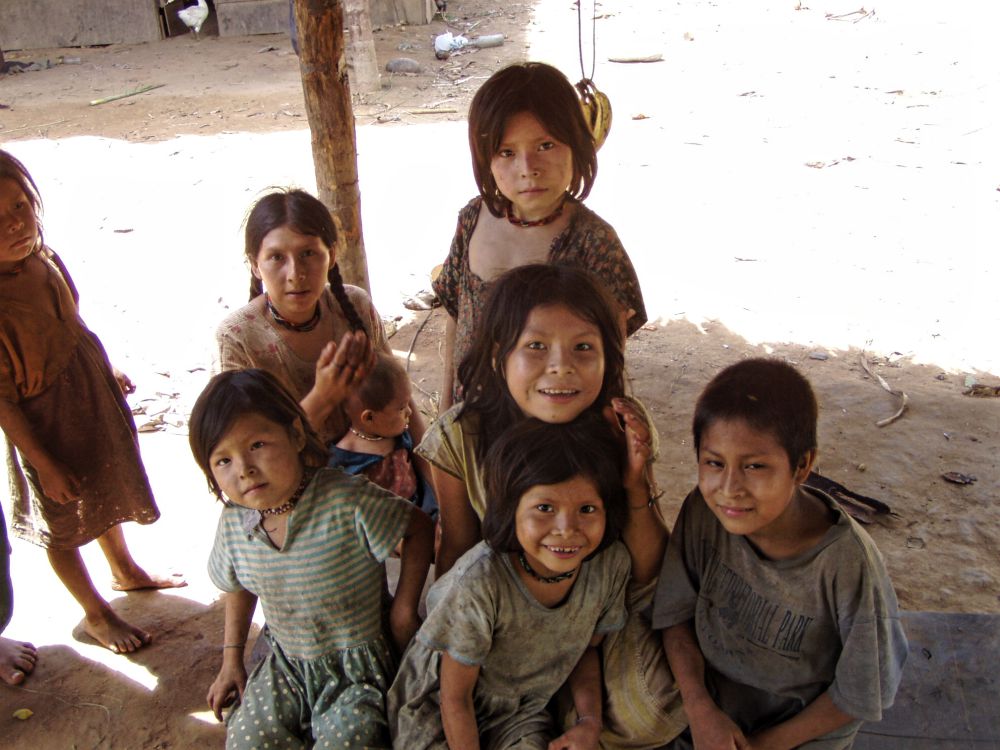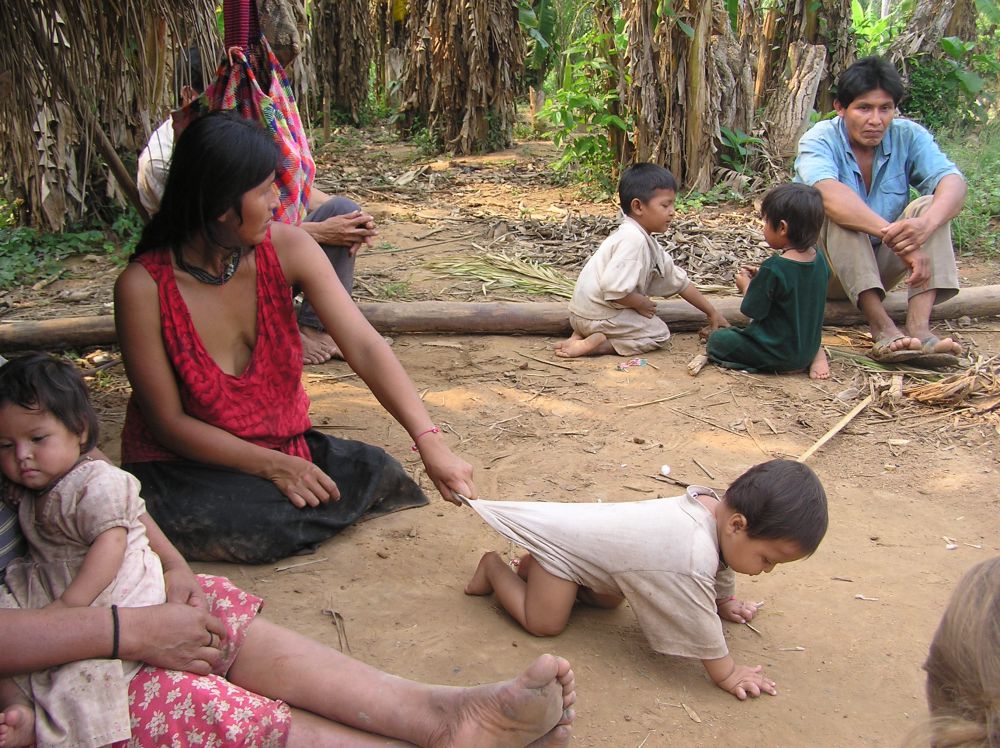For Whom the Births (and Worms) Toll

Human childbirth is not only unpleasant, it’s also assumed to take a toll on women’s health, even while women have a greater life expectancy. A new study led by UC Santa Barbara researchers, however, finds that indigenous women in the Bolivian Amazon with some of the highest birth rates in the world today experience negligible health costs from their intense reproductive effort.
The study tracking 869 Tsimane women over 12 years is the most comprehensive under natural conditions ever conducted, said Michael Gurven, a professor of anthropology at UCSB and the lead author of “Health Costs of Reproduction Are Minimal Despite High Fertility, Mortality and Subsistence Lifestyle,” published in Nature Scientific Reports. The findings are remarkable because they run counter to expectations, he noted, given that the Tsimane live as horticulturalist-foragers in a harsh environment with limited food and an abundance of pathogens and parasites.
It is often thought that costly (“cell-mediated”) immune function is suppressed during pregnancy to help tolerate the growing fetus, and so exposure to harmful pathogens should be dangerous. Tsimane growth is also stunted due to limited nutrition and long periods of parasitic exposure. In this environmental context, the average Tsimane woman has nine births in rapid order, and each child is breastfed for nearly two years.
“One might expect such high, cumulative reproductive costs to take its toll on a woman’s health if her body doesn’t have a chance to recover,” Gurven explained. “Yet we found — using common metrics of maternal health and nutritional status such as weight and body mass index, and some biomarkers assessing anemia and immune activation — that although women with more kids spaced closer together tended to have lower weight and BMI than those with fewer kids spaced further apart — when we looked at changes within women over time, these anthropometric measures increased over successive births.” American women, by contrast, typically gain weight with each successive pregnancy, but they have only a few children and are well nourished, he added.
Gurven, director of UCSB’s Evolutionary Anthropology and Biodemography Research Group, and co-director of the Tsimane Health and Life History Project, said the findings bring into focus one way that extensive human sociality, or “cooperative breeding,” helps differentiate us from other primates, and has allowed us to swarm the planet. Humans such as the Tsimane who live under natural fertility conditions have a higher birthrate than would be expected of a primate of our size, with infants weaned early and the next child arriving fairly quickly. “Despite rapid reproduction, female hunter-gatherers and horticulturalists typically work less, not more, to meet their greater energetic needs for lactation,” he explained. “This is only possible in a highly social species where others can help out during periods of need.”
In other species, Gurven said, mothers expend greater energy foraging for food because they’re essentially on their own. Lactating baboons, for example, spend a lot more time looking for something to eat because they don’t have others cooperatively provisioning them. All that extra effort to find more food burns calories, and thereby delays the time at which they start ovulating again.
“So the Tsimane case is fascinating in this light: Women having nine births spaced close together, yet not experiencing obvious maternal depletion, is a testament to the favorable social structure of humans who actively pool their efforts and resources within and among generations,” Gurven said. “Women not showing evidence of maternal depletion is only possible due to high levels of cooperation from kin and other group members that support women when pregnant and lactating.”
So are there really no health costs to such high fertility? “Dying in or shortly after childbirth is definitely more common among Tsimane than in high-income countries,” Gurven added, “but here we were more interested in the sustained costs to survivors.” Other health conditions can worsen with successive births among Tsimane. Cystocele — or prolapsed bladder — is one of these, as is lower bone-mineral density and higher risk of osteoporosis, as Gurven, Jonathan Stieglitz (Institute for Advanced Study in Toulouse, France) and his team revealed in a paper by published last year in American Journal of Physical Anthropology.
The metabolic costs of immune defense against pathogens
Though living in a pathogenic world typical of the preindustrial past does not appear to make reproduction more costly for women, it does impact the immune system in important ways. A study by Gurven’s group, led by his colleague Aaron Blackwell earlier this year, revealed how the Tsimane’s immune system has risen to the challenge to tolerate or defend against the diverse onslaught of micro-critters.
Now a new paper by Gurven, Megan Costa, a visiting demographer to UCSB’s Broom Demography Center, Benjamin Trumble, a postdoctoral fellow in UCSB’s Institute for Social, Behavioral and Economic Research, Blackwell and colleagues reports that the Tsimane have a high resting metabolic rate (RMR) and total daily energy expenditure (TDEE) — meaning they burn more calories per pound of body weight per day than sedentary industrialized populations. For Tsimane women, their RMR is 18 to 47 percent higher than expected and for men it’s 22 to 40 percent. The researchers show that higher levels of physical activity and other factors cannot account for the higher energy expenditure. Among Tsimane, those with clinical symptoms of intestinal worms and high white blood cell count indicative of active infection had 10 to 15 percent higher RMR. This amounts to roughly 150 extra calories per day, or the equivalent of a 12-ounce can of Coca-Cola.
Total daily energy expenditure has its limits, so with extra energy spent on fighting infection, and energy spent producing children and intensive breastfeeding, what areas of health have to take a hit? This is a question Gurven’s team is currently tackling with ongoing biomedical surveillance. Some possibilities include low bone mineral mass, anemia, altered blood lipid profile, lethargy and other sickness behavior. Consistent with these diversions of energy, Tsimane bone mineral status and cholesterol levels are substantially lower than among age-matched U.S. peers, and anemia and depressed affect is prevalent in both sexes (but greater in women).
Another possibility is that investing less in physical growth will result in smaller body size and weight. Indeed, height is stunted and obesity is rare in Tsimane, who have levels of obesity eight to 10 times lower than that of their American age-matched peers. This doesn’t mean, however, that being loaded with pathogens and parasites is a good diet strategy, said Gurven, who noted some snake-oil diet pills dating back to the 1930s have included roundworm eggs or tapeworm parts.
“Sometimes they work, often they don’t,” Gurven said. “And the harmful effects of infection — from anemia, worms getting into your lungs, bowel obstruction, to name a few — can be fatal. Giardia and amoebas can also help you lose weight, but too rapidly, and often with dehydration and potentially fatal consequences. These parasites can also deprive the body of vital nutrients. Overall, I wouldn’t recommend people dance barefoot in latrines in the hopes of shedding some pounds.”
The paper, “High Resting Metabolic Rate Among Amazonian Forager-Horticulturalists Experiencing High Pathogen Burden,” is published in the American Journal of Physical Anthropology.






